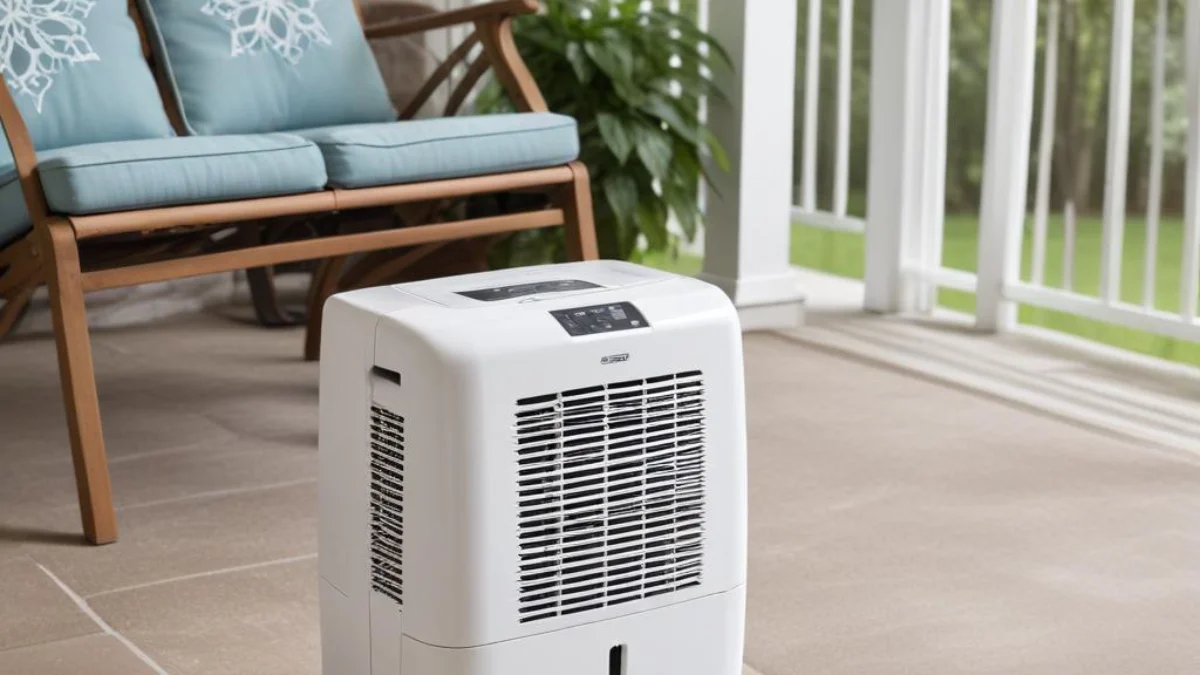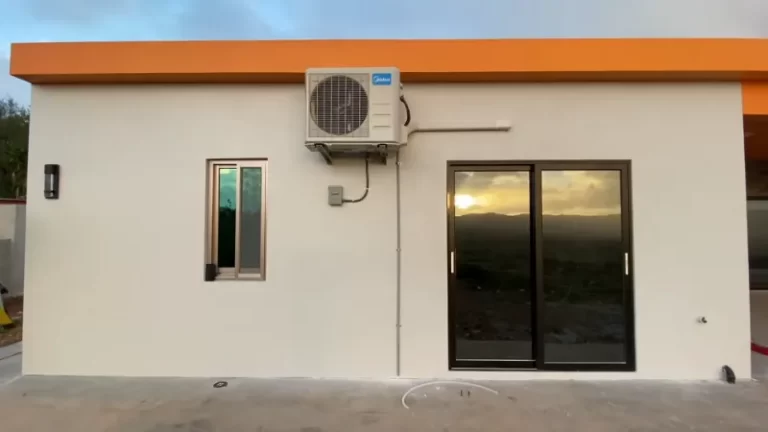Why You Need a Dehumidifier for Your Screened Porch
That dreamy screened porch—your personal oasis for morning coffee and evening relaxation—can quickly turn into a damp, sticky nightmare. High humidity doesn’t just make the air feel heavy and uncomfortable; it invites a host of problems that can ruin your outdoor enjoyment. From musty odors to the relentless advance of mold and mildew on your beautiful patio furniture, excess moisture is the unseen enemy of every porch owner.
You’ve likely tried circulating the air with fans, but on truly muggy days, that only seems to push the thick, wet air around. The core of the problem isn’t just air movement; it’s the sheer volume of water vapor saturating your space. This is where a dehumidifier for your screened porch becomes not just a luxury, but an essential tool for reclaiming your comfort and protecting your investment.
Many homeowners wonder if a standard dehumidifier can even work in a semi-outdoor space like a screened porch. The short answer is yes, but its effectiveness depends on understanding the unique challenges and choosing the right approach. Let’s dive into how you can conquer the humidity and transform your porch back into the paradise it was meant to be.

You'll Learn About
Why Your Screened Porch Is a Magnet for Moisture
A screened porch exists in a unique middle ground between indoors and outdoors. While it protects you from bugs and debris, the screens do little to block moisture-laden air, especially in humid climates. This constant exposure to the elements creates a perfect breeding ground for problems that can detract from your enjoyment and even damage your property.
The Unseen Damage of High Humidity
When humidity levels climb, the air becomes saturated with water vapor. This moisture settles on every surface of your porch, from the floorboards to the furniture. Over time, this can lead to a variety of issues. Mold and mildew are among the most common and destructive consequences. These fungi thrive in damp environments, appearing as unsightly black, green, or white patches on cushions, wood, and even the screens themselves. Not only do they look and smell bad, but they can also pose health risks, triggering allergies and respiratory issues.
Beyond mold, persistent dampness can cause wood to rot, metal to rust, and fabrics to develop a permanent musty odor that no amount of airing out can fix. Your comfortable and inviting porch can quickly become a space you want to avoid. This is why simply circulating the air with a fan often isn’t enough; you need to actively remove the water from the air. For those dealing with other home air quality issues, you might find similar challenges with a cold air return with no ductwork, as proper air circulation is key to a healthy home environment.
Choosing the Right Dehumidifier for Your Screened Porch
Using a dehumidifier on a screened porch presents a unique challenge: you’re essentially trying to dehumidify the outdoors. Because the space isn’t sealed, a standard dehumidifier will have to work much harder, and it will likely run continuously. However, with the right strategy and equipment, you can significantly improve the comfort and health of your porch environment.
Can You Use a Regular Dehumidifier Outside?
While not designed for open-air use, a standard portable dehumidifier can be effective on a screened porch, provided you manage your expectations. It won’t make your porch feel like an air-conditioned room, but it can substantially lower the humidity in the immediate area, making it feel more comfortable and inhibiting mold growth. The key is to create a more contained environment when you’re using the dehumidifier.
To maximize efficiency, consider adding temporary weather-resistant curtains or clear vinyl tarps to your screen openings. This creates a more enclosed space, allowing the dehumidifier to work more effectively without constantly battling an endless supply of humid outdoor air. When you’re ready to enjoy the open breeze, simply pull back the curtains. Think of it as creating a “zone” of comfort when you need it most.
Sizing and Features to Look For
When selecting a unit, consider the size of your porch. Dehumidifier capacity is measured in pints of moisture removed per day. While standard sizing charts are based on enclosed rooms, for a screened porch, it’s wise to choose a larger capacity unit than you would for an indoor space of the same size. A 50-pint or larger dehumidifier is often a good starting point for an average-sized porch.
Look for features that make operation easier in a semi-outdoor setting. A continuous drainage option is crucial. Constantly emptying a water bucket on a humid day is a tedious task. Most dehumidifiers allow you to attach a standard garden hose to divert the collected water away from the porch, perhaps into a nearby flower bed or drain. Some models even come with a built-in pump to push water vertically, offering more flexibility in where you can drain it. Another helpful feature is an auto-restart function, which will automatically turn the unit back on to your previous settings after a power outage.
| Feature | Why It’s Important for a Screened Porch | Recommendation |
|---|---|---|
| Capacity (Pints) | A screened porch is an open environment, requiring more power to be effective. | Choose a larger capacity unit, such as 50-70 pints. |
| Continuous Drainage | Avoids the constant need to manually empty the water tank on humid days. | Look for a model with a hose connection or a built-in pump. |
| Durability | The unit will be exposed to more temperature fluctuations and moisture than an indoor unit. | Select a well-built model with good reviews for longevity. |
| Auto-Restart | Ensures the unit continues working after a power interruption. | A helpful feature for maintaining consistent humidity control. |
| Low-Temperature Operation | Useful if you plan to use the porch in cooler, damp weather. | Consider a model with an auto-defrost feature. |
Practical Solutions for a Drier, More Comfortable Porch
A dehumidifier is a powerful tool, but it’s most effective when combined with other strategies to reduce moisture and improve airflow. By taking a comprehensive approach, you can create a more resilient and enjoyable outdoor living space.
Enhance Air Circulation
Even with a dehumidifier, good air circulation is key. Ceiling fans are excellent for this purpose, as they help to evaporate surface moisture and distribute the drier air produced by the dehumidifier. If your porch is large, consider using multiple fans to ensure there are no stagnant air pockets where moisture can collect. Keeping the air moving makes it harder for mold and mildew spores to settle and grow.
Manage Water Sources
Take steps to minimize the amount of water that enters your porch in the first place. Ensure your gutters are clean and directing water away from the porch foundation. If rain tends to blow in through the screens, installing outdoor-rated blinds or shades can provide an extra layer of protection during storms. Also, be mindful of plants on the porch; while beautiful, they can contribute to humidity through transpiration and damp soil. Keeping them to a minimum or moving them just outside the screened area can help.
Proper maintenance of your home’s exterior can also play a role. For instance, if you’re experiencing noise issues with other household systems, like a radon fan that is loud when cold, it’s a reminder that all home systems need to be in good working order to function effectively. Similarly, ensuring your roof is sound and without leaks is crucial, a task that might seem daunting if you need to learn how to hang lights on a steep roof but is essential for overall home maintenance.
Protect Your Furniture and Fabrics
To further combat the effects of humidity, choose outdoor furniture and fabrics that are inherently resistant to moisture and mildew. Materials like teak, aluminum, and synthetic wicker are excellent choices for furniture frames. For cushions and pillows, opt for fabrics like acrylic or olefin, which are designed to dry quickly and resist fungal growth. On particularly damp days, or when you know it’s going to rain, bringing cushions indoors or placing them in a waterproof storage box is a simple but effective preventative measure.
Regular cleaning is also vital. Wipe down furniture and other surfaces frequently to remove dust and pollen, which can serve as food for mold. A simple solution of mild soap and water is often sufficient to keep things clean and fresh, ensuring your porch is always ready for you to relax and enjoy.

![Polarity Reversed on Furnace [Symptoms, Causes, Fixes]](https://fixitinthehome.com/wp-content/uploads/2023/02/Polarity-Reversed-on-Furnace-768x432.webp)
